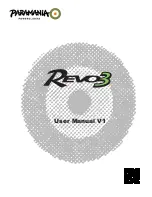
lower the downwind wheel as airspeed decays and aileron authority is
reduced. The aircraft will need to be accurately steered straight down the
runway with rudder during this process. The nose gear should be held off
initially and gently lowered before rudder authority reduces too far and
aerodynamic directional control is lost. As the nose wheel touches down
rudder will have to be straightened to avoid a steering snatch due to the
rudder deflection applied against the crosswind.
4.13.5 When the nose wheel is down aileron will still need to be applied against the
crosswind and neutral or light forwards elevator pressure should be applied to
ensure adequate steerage from the nose wheel and avoid yawing into wind.
4.14
Cruise.
The Skyranger has a large range of cruise speed. At the higher values fuel
consumption will be correspondingly higher. Cruise is set up in the normal way
by selecting the required attitude and power and trimming off any residual
pitch forces.
4.15
Turning.
4.15.1 Turning the Skyranger is accomplished in the standard manner. In common
with most microlight aircraft the Skyranger requires some rudder co ordination
to maintain balance when rolling into and out of a turn.
4.15.2 As with any other aircraft, the stall speed will increase with bank angle. The
stalling speed at 60
0
bank will rise to 51 knots CAS[ IAS], at max takeoff
weight.
4.16
Flight in Turbulence.
The Skyranger has powerful controls and handles turbulence well. However,
do not fly above the manoeuvre speed of 72 knots CAS [ IAS] in
turbulence. Below this speed the worst thing a gust can do to you is stall the
wing or one of the control surfaces. Above that speed, it is possible for strong
gusts to overstress the aircraft.
Skyranger Operators Manual, Issue 1, AL0, June 2002
18
















































